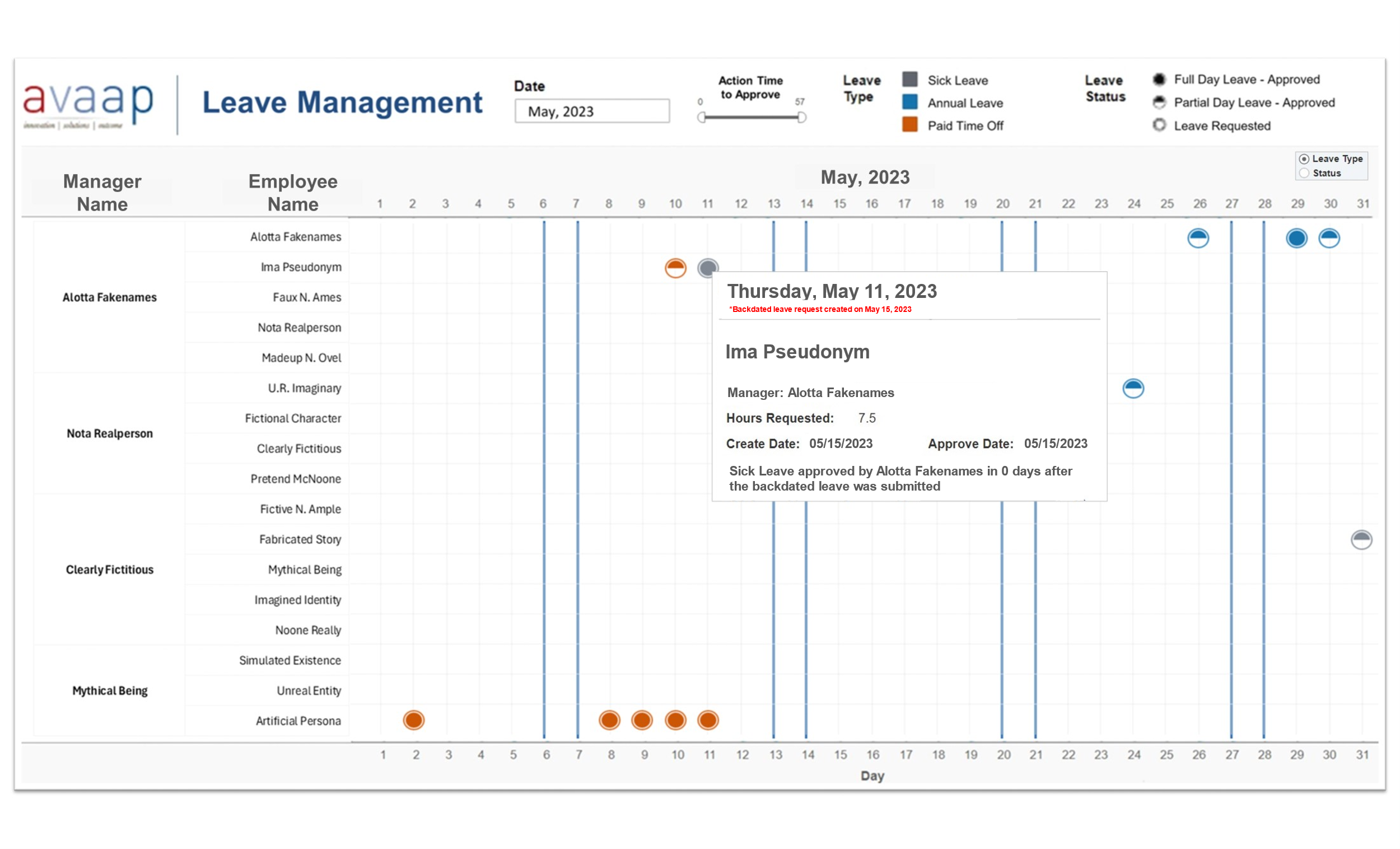Using Data and Analytics for Leave Management in the Public Sector
Research shows that paid time off is one of the most highly valued benefits by employees. It is also a great way to combat burn out and manage employee mental health. Employees are entitled to paid time off; it’s needed and valued. When paid time off is mismanaged, however, it can become a burden for both employers and employees.
Public sector organizations that use data and analytics to manage employee leave can optimize workforce planning and ensure adequate staffing levels that contribute to high morale. Additionally, data-driven insights enable better tracking of employee well-being, facilitating the implementation of targeted policies to promote work-life balance and employee satisfaction.
Identifying Leave Patterns
It’s common for there to be an uptick in leave requests around certain holidays, local school system spring breaks, and other times of the year. Recognizing leave patterns helps state and local government to understand trends and adjust accordingly. It is also useful for organizations to recognize patterns or low leave rates, and determine if there is a trend among specific departments or people managers. Gaining a general understanding of leave patterns, including common reasons for taking leaving, can help organizations track patterns along things like performance, employee satisfaction, business quarters, and more. It can also help HR to design better leave management strategies and policies.
Streamline Leave Management Processes
 Every organization has unique leave processes and policies. Some organizations have employees track requests in an online system, some still use paper processes, while others use a shared calendar approach. Organizations that invest in a modern system for leave management can use data and analytics to streamline and automate leave processes, reducing administrative burdens and paper processes while simplifying the process for managers and employees. Data and analytics can also integrate with other systems to give organizations a complete view into employee habits and trends when it comes to leave.
Every organization has unique leave processes and policies. Some organizations have employees track requests in an online system, some still use paper processes, while others use a shared calendar approach. Organizations that invest in a modern system for leave management can use data and analytics to streamline and automate leave processes, reducing administrative burdens and paper processes while simplifying the process for managers and employees. Data and analytics can also integrate with other systems to give organizations a complete view into employee habits and trends when it comes to leave.
Visualize Leave Data to Answer Decisions Faster and Easier
Data visualization dashboards provide data in an easy to use and accessible format. When it comes to leave management, organizations can stand up multiple different dashboards to answer key questions about leave tracking. Here are three questions a leave management dashboard can answer:
- What is the upcoming leave schedule for employees?
- What is the status of the leave requests submitted by employees?
- What is the type of leave and hours required?
By using the drill-down feature in Tableau, leave management dashboards can also answer:
- When was the leave request created?
- When was the leave request approved?
- Was a backdated leave request created?
- Was the leave request approved before the actual leave date?
- How long did it take for the leave request to be approved?
Example leave management dashboard by Avaap
Leveraging Data and Analytics for Efficient Employee Leave Management
Embracing a higher level of data and analytics maturity is more than a strategic advantage for public sector organizations. The insights derived from robust analytics not only streamline employee leave management but also empower business leaders to make informed decisions across various facets of their operations. As public sector organizations navigate an increasingly complex and dynamic landscape, the ability to harness data for workforce optimization and employee well-being is more essential than ever. Investing in data-driven approaches helps public sector entities position themselves as agile, responsive, and better equipped to fulfill their missions in service to the public.


